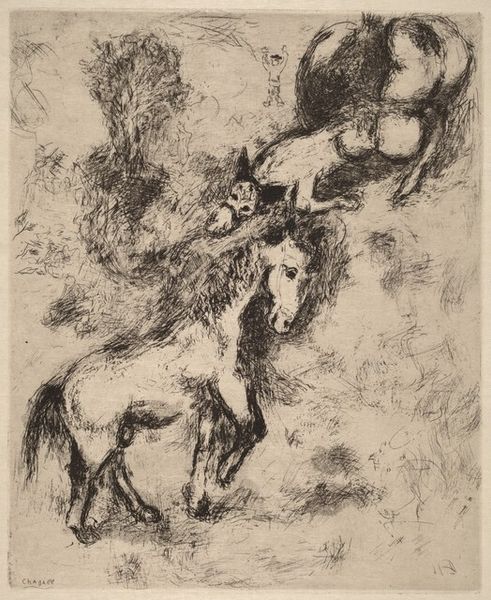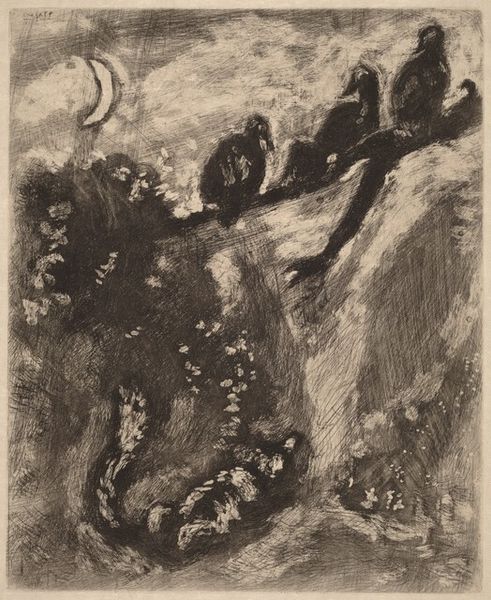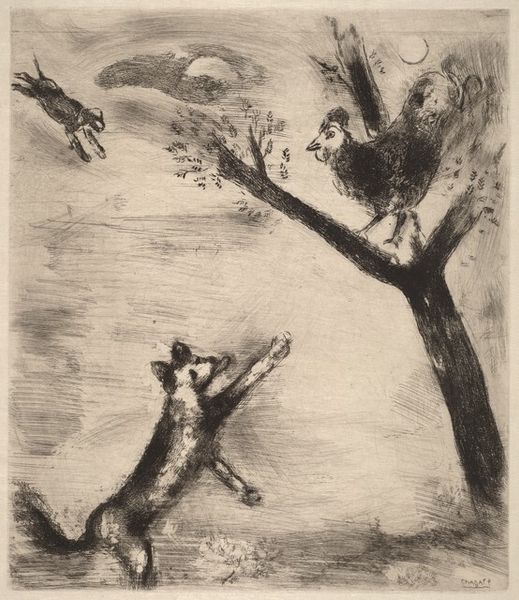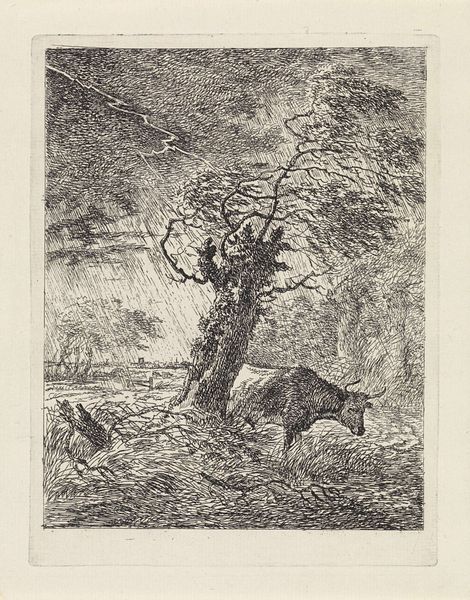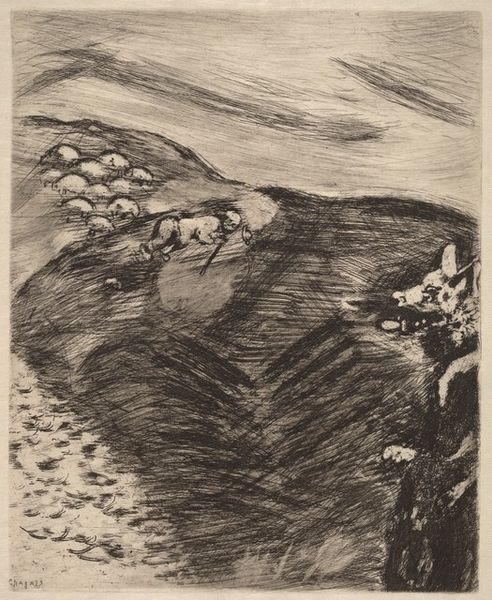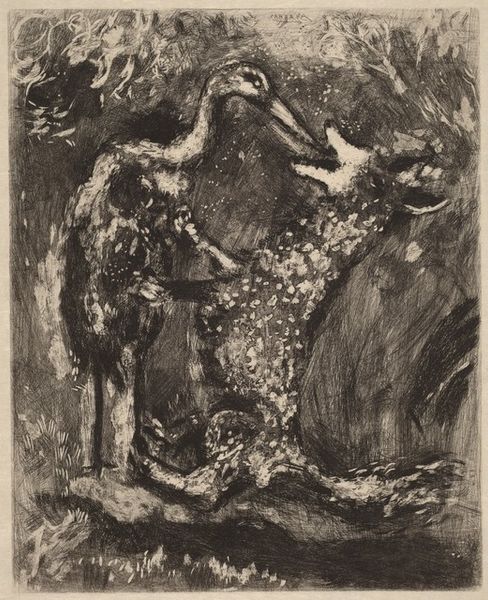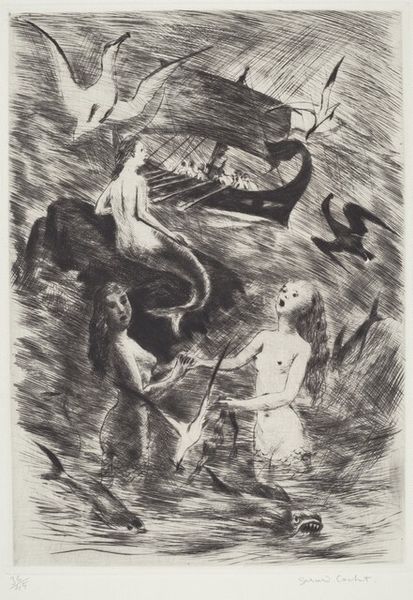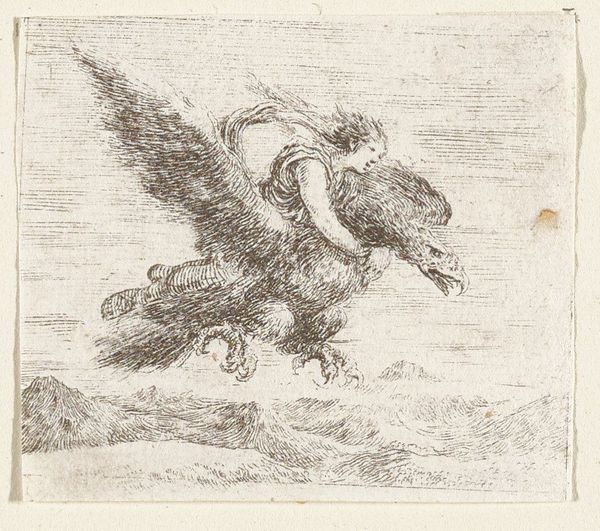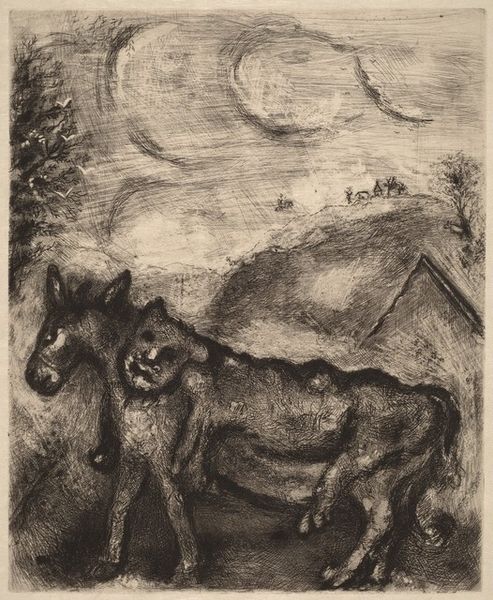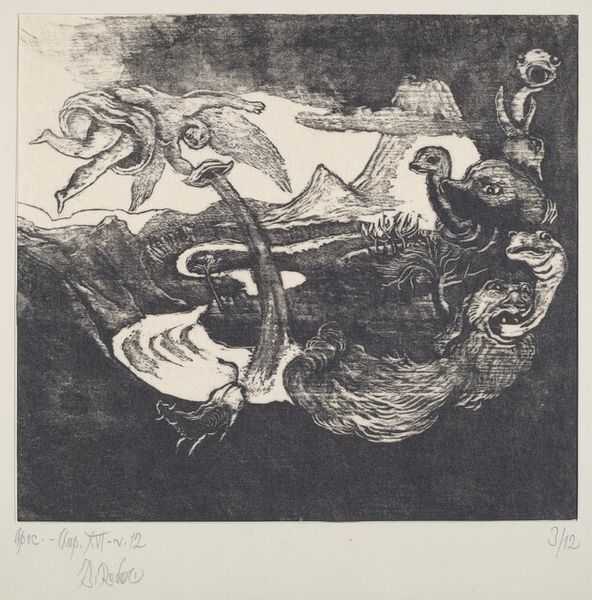
Copyright: National Gallery of Art: CC0 1.0
Editor: This is "The Raven Who Wished to Imitate the Eagle" by Marc Chagall, a print made between 1927 and 1930. The swirling lines and fantastical imagery give it a very dreamlike quality, almost like a fable. What do you see in this piece? Curator: Formally, the composition strikes me as a study in contrasts. Notice how the sharp, distinct lines that define the raven in the foreground give way to looser, more gestural marks depicting the landscape. Above, the ethereal image of the eagle with its prey seems almost weightless compared to the solid presence of the raven. Do you observe this effect, too? Editor: I do see that now! The texture definitely changes from the bottom to the top. It almost separates the work into real and imagined spaces. What do you make of that crescent moon shape? Curator: Intriguing observation! The crescent, positioned in the top left, seems to act as a formal counterweight to the darker, more defined area occupied by the raven. Moreover, notice the swirling lines that create a sense of depth and movement, drawing the eye around the composition. These marks, seemingly chaotic at first glance, in fact operate as a compositional tool to harmonize disparate elements, thereby creating a unified, aesthetically balanced plane. Editor: That's fascinating! So the lines aren’t just there to add detail, but they actually shape the way we see the picture? Curator: Precisely. And in terms of form, this emphasis draws our attention to how the symbolic and allegorical elements intersect. It calls attention to the printmaking method Chagall employed and elevates the reading beyond the story being depicted. Editor: That gives me a lot to think about regarding how I consider narrative. Thanks for the help! Curator: My pleasure. I'll keep that in mind as I reflect on works.
Comments
No comments
Be the first to comment and join the conversation on the ultimate creative platform.


